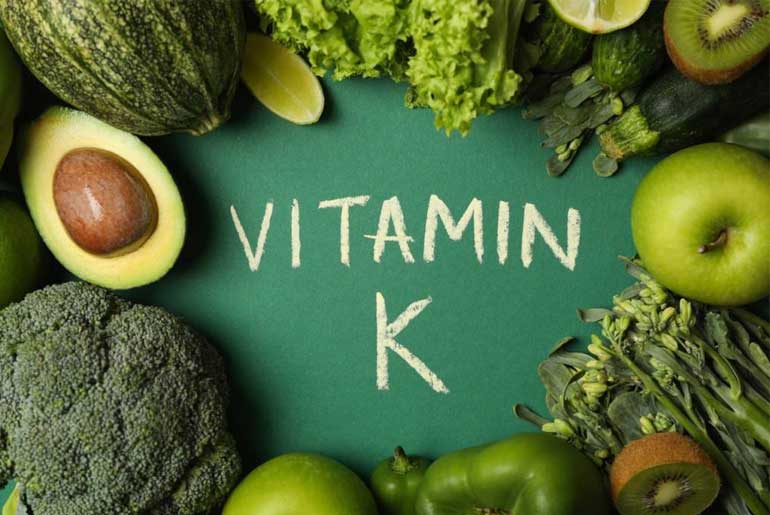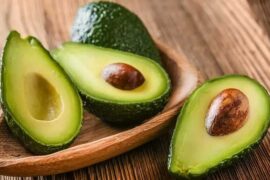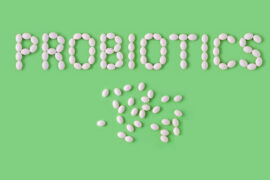Introduction:
Vitamin K is a fat-soluble nutrient that plays a crucial role in various physiological processes within the body. It is primarily known for its essential function in blood clotting, ensuring wounds heal properly and preventing excessive bleeding. In addition to its role in coagulation, vitamin K also contributes to bone health by aiding in the regulation of calcium and supporting the synthesis of bone proteins.
There are two main forms of vitamin K: vitamin K1 (phylloquinone), which is primarily found in leafy green vegetables and other plant-based sources, and vitamin K2 (menaquinone), which is present in fermented foods, certain animal products, and is also synthesized by gut bacteria.
Vitamin K deficiency can lead to increased bleeding tendencies and impaired bone health. However, deficiencies are relatively rare and often occur in specific medical conditions or as a side effect of certain medications.
While vitamin K deficiency is uncommon, maintaining an adequate intake is essential for overall health. Including a variety of vitamin K-rich foods in the diet, such as leafy greens, broccoli, and fermented foods, can help ensure proper blood clotting, bone health, and overall well-being.
Here are the top 10 food sources of vitamin K:
1. Leafy Green Vegetables:
Leafy green vegetables, a diverse and nutrient-packed group, encompass a variety of greens such as spinach, kale, lettuce, and collard greens. Their vibrant hue is indicative of their rich nutritional content. These greens are low in calories and carbohydrates, making them a staple for weight-conscious individuals. They boast an impressive array of vitamins, including K, A, and C, along with minerals like iron and potassium. Their antioxidants, such as lutein and beta-carotene, play a vital role in safeguarding cells from oxidative stress.
Leafy greens offer multifaceted health advantages. Their fiber content promotes healthy digestion, aids in managing cholesterol levels, and imparts a sense of fullness. Moreover, these greens are associated with cardiovascular well-being due to their contribution to blood pressure regulation and potential reduction in heart disease risk. Their vitamin K content supports blood clotting and bone health, while their vitamin A content benefits vision.
Embracing leafy greens in your diet is not only a flavorful endeavor but also a wise nutritional choice. Whether tossed into salads, blended into smoothies, or sautéed as a side dish, their versatility makes them easily adaptable to various culinary creations. Incorporating leafy greens into meals can contribute to an enhanced sense of vitality and overall health.
2. Brussels Sprouts:
Brussels sprouts, small green vegetables resembling miniature cabbages, offer a wealth of nutritional benefits in their compact form. Packed with essential nutrients, these cruciferous vegetables are recognized for their versatility and health-promoting properties. They are a notable source of vitamin C and vitamin K, providing support to the immune system and bone health. Additionally, Brussels sprouts contain fiber, which aids digestion and supports healthy cholesterol levels.
Their high antioxidant content, including vitamins A and E, shields cells from oxidative damage and bolsters overall well-being. Brussels sprouts also contain compounds like glucosinolates, which have been associated with potential anti-cancer effects.
Aiding in weight management, Brussels sprouts are low in calories and carbohydrates while offering satiating fiber. They can be prepared in various ways – roasted, sautéed, or steamed – making them a versatile and nutritious addition to meals.
Embracing Brussels sprouts as part of your diet not only introduces a flavorful and texturally appealing vegetable but also provides an array of health advantages, contributing to a well-rounded and nourishing culinary experience.
3. Broccoli:
Broccoli, a versatile and nutrient-packed cruciferous vegetable, is celebrated for its health-promoting attributes. This vegetable is not only a good source of vitamin K but also provides other important nutrients. With its distinctive appearance of dense clusters of green florets atop sturdy stalks, broccoli offers a wide range of essential nutrients and potential benefits.
Rich in vitamins C, K, and A, broccoli supports immune function, bone health, and vision. It contains fiber, aiding digestion and contributing to a feeling of fullness. Antioxidants like sulforaphane, found in broccoli, are associated with potential anti-inflammatory and cancer-fighting properties.
Broccoli’s low calorie and carbohydrate content makes it suitable for weight management. It can be enjoyed in various forms – steamed, roasted, or added to stir-fries – enhancing its culinary adaptability.
Incorporating broccoli into your diet introduces a flavorful and nutrient-dense vegetable that offers a host of health advantages, contributing to overall well-being and providing a delectable addition to a balanced meal plan.
4. Cabbage:
Cabbage, a humble yet nutritious cruciferous vegetable, comes in various forms like green, red, and Savoy cabbage. Its dense, leafy structure is rich in essential nutrients and offers numerous health benefits. Both green and red cabbage are decent sources of vitamin K.
Loaded with vitamin C and vitamin K, cabbage supports immune function and bone health. It also contains dietary fiber, which aids digestion and helps maintain healthy cholesterol levels. Cabbage is low in calories, making it a suitable choice for weight management.
Cabbage boasts antioxidants like anthocyanins (in red cabbage) and sulforaphane, contributing to potential anti-inflammatory and anti-cancer effects. Its versatility allows for various cooking methods – from coleslaws and salads to sautés and soups.
Incorporating cabbage into your diet provides a simple yet effective way to enhance your nutrient intake and promote overall well-being. Its crisp texture, earthy flavor, and range of potential health advantages make it a valuable addition to diverse and wholesome meals.
5. Natto:
Natto, a traditional Japanese dish, is a unique and nutritious fermented soybean product with a distinctive flavor and texture. Known for its acquired taste, natto offers a range of health benefits that make it a popular dietary choice in Japan and beyond.
Made through the fermentation of soybeans using a specific bacteria called Bacillus subtilis, natto is a rich source of nutrients, including protein, dietary fiber, and essential vitamins and minerals like vitamin K2, iron, and calcium.
One of the most notable attributes of natto is its exceptionally high vitamin K2 content, particularly the menaquinone-7 (MK-7) form. Vitamin K2 is crucial for bone health and is believed to help regulate calcium metabolism, directing it to bones and teeth while preventing excessive accumulation in arteries.
Natto also contains enzymes that aid digestion and contribute to gut health. Additionally, it is associated with potential cardiovascular benefits due to its potential to support healthy blood vessels and circulation.
While its strong taste and slimy texture might be an acquired preference, those who appreciate natto’s unique characteristics can enjoy its nutritional benefits as part of a balanced diet. Whether consumed on its own, as a topping, or incorporated into various dishes, natto adds a distinct and culturally significant element to culinary explorations.
6. Spring Onions (Scallions):
Spring onions, also known as scallions, are versatile and flavorful vegetables that belong to the allium family, which includes garlic and onions. With their slender green stalks and small white bulbs, spring onions offer a mild yet distinctive onion flavor that complements a wide range of dishes.
These vegetables are rich in essential nutrients, including vitamins A and C, which support immune function and skin health. Spring onions also provide a good dose of vitamin K, vital for blood clotting and bone health. They contain antioxidants like quercetin, which has potential anti-inflammatory properties.
Spring onions are low in calories and carbohydrates, making them a favorable choice for those seeking to manage their weight or carbohydrate intake. Their versatility is showcased in both raw and cooked dishes, where they can be used as garnishes, toppings, or as integral components in various cuisines.
Incorporating spring onions into your culinary repertoire not only adds a burst of flavor but also introduces valuable nutrients to your meals. Whether enhancing salads, soups, stir-fries, or other creations, spring onions contribute both taste and nutrition to a well-rounded diet.
7. Parsley:
Parsley, a vibrant and aromatic herb, is renowned for its distinct flavor and versatile culinary applications. With its curly or flat leaves, parsley is not only a popular garnish but also a nutritional powerhouse that offers a variety of health benefits.
Rich in vitamins and minerals, parsley provides a significant amount of vitamin K, which plays a crucial role in blood clotting and bone health. It also contains vitamin C, an antioxidant that supports immune function and skin health. Additionally, parsley offers folate, iron, and vitamin A.
Beyond its nutritional content, parsley contains compounds like flavonoids and volatile oils with potential antioxidant and anti-inflammatory properties. These properties contribute to overall well-being and may support heart health and reduce the risk of chronic diseases.
Parsley is a versatile herb that can be used fresh or dried in a wide range of dishes. It adds depth of flavor to salads, sauces, soups, and various other culinary creations. It’s refreshing taste and vibrant color make it a delightful addition to both savory and even some sweet dishes.
Incorporating parsley into your diet introduces not only an element of taste and visual appeal but also a source of valuable nutrients that can contribute to a balanced and healthful eating experience.
8. Asparagus:
Asparagus, a springtime delicacy, is a nutritious and versatile vegetable known for its unique flavor and tender texture. With its slender stalks and distinct appearance, asparagus offers a range of health benefits and culinary possibilities.
Rich in vitamins and minerals, asparagus is a good source of folate, which supports cell division and is important during pregnancy. It also contains vitamin K, contributing to bone health and blood clotting, as well as vitamin A, which supports vision and immune function.
Asparagus is notably high in dietary fiber, which aids digestion and promotes a feeling of fullness. It also contains antioxidants like vitamins C and E, which help protect cells from oxidative stress.
This vegetable can be prepared in various ways, from roasting and grilling to steaming and sautéing. Its versatile nature allows it to be enjoyed as a side dish, incorporated into salads, or even used as a component in main courses.
Incorporating asparagus into your meals not only adds a distinctive and delightful taste but also provides an array of essential nutrients that contribute to overall well-being. Whether indulging in its unique flavor during its seasonal availability or enjoying it year-round, asparagus is a valuable addition to a nutritious and flavorful diet.
9. Prunes:
Prunes, often referred to as dried plums, are nutrient-rich fruits that offer a range of health benefits. Prunes are obtained by drying plums, resulting in a sweet and chewy snack that is not only delicious but also packed with valuable nutrients.
Rich in dietary fiber, prunes promote healthy digestion by preventing constipation and supporting regular bowel movements. The fiber content also helps manage cholesterol levels and contributes to a feeling of fullness, making prunes a satisfying and wholesome snack.
Prunes are a good source of antioxidants, particularly phenolic compounds, which help protect cells from oxidative damage and may contribute to overall well-being. They also contain vitamins and minerals, including vitamin K and potassium.
One notable benefit of prunes is their potential to support bone health. Prunes are a natural source of certain compounds that may help prevent bone loss and improve bone density, making them a valuable addition to a diet aimed at maintaining strong bones.
Prunes can be enjoyed on their own as a snack or used in various culinary applications, such as baking, cooking, and adding a naturally sweet touch to dishes. Their versatility and nutritional value make them a convenient and healthful option for satisfying both sweet cravings and dietary needs.
Incorporating prunes into your diet introduces a nutrient-dense and delicious food that supports digestive health, provides antioxidants, and may contribute to maintaining strong bones. Whether enjoyed as a snack or as an ingredient in recipes, prunes offer a convenient and flavorful way to enhance your overall well-being.
10. Cucumbers:
Cucumbers, crisp and refreshing vegetables, are widely recognized for their high water content and subtle flavor. With their characteristic green skin and mild taste, cucumbers offer various health benefits and culinary versatility.
Hydration is a key feature of cucumbers due to their high water content, making them a hydrating snack choice, especially during warmer months. Cucumbers are also low in calories and carbohydrates, making them a suitable option for those looking to manage their weight or calorie intake.
Cucumbers provide a modest amount of vitamins and minerals, including vitamin K, vitamin C, and potassium. While their nutrient content may be relatively modest, their high water and fiber content contribute to satiety and support healthy digestion.
One distinctive benefit of cucumbers is their potential to aid in skin health. Cucumbers contain silica, a compound that is believed to contribute to skin elasticity and hydration, making them a popular ingredient in skincare routines.
Cucumbers can be enjoyed in various ways, from adding slices to salads and sandwiches to creating refreshing beverages like cucumber water. They can also be used as a base for soups and dips, showcasing their versatility in both raw and cooked dishes.
Incorporating cucumbers into your diet introduces a hydrating and low-calorie option that offers benefits for digestion, hydration, and potential skin health. Whether as a standalone snack or a versatile ingredient, cucumbers contribute to a well-rounded and healthful eating experience.
Conclusion:
Vitamin K is a crucial nutrient with key roles in blood clotting and bone health. Leafy greens and fermented foods are excellent sources. Adequate Vitamin K intake supports overall well-being and emerging research suggests potential benefits beyond its traditional functions. Including Vitamin K-rich foods in your diet contributes to a balanced and healthy lifestyle.
Disclaimer:
The information contained in this article is for educational and informational purposes only and is not intended as a health advice. We would ask you to consult a qualified professional or medical expert to gain additional knowledge before you choose to consume any product or perform any exercise.









